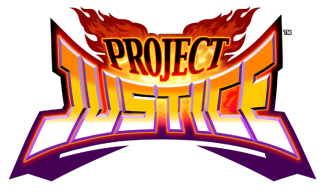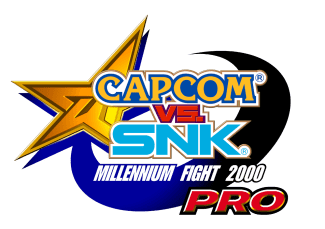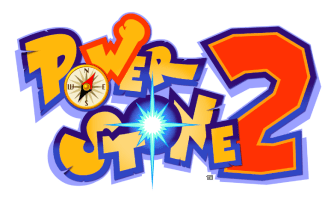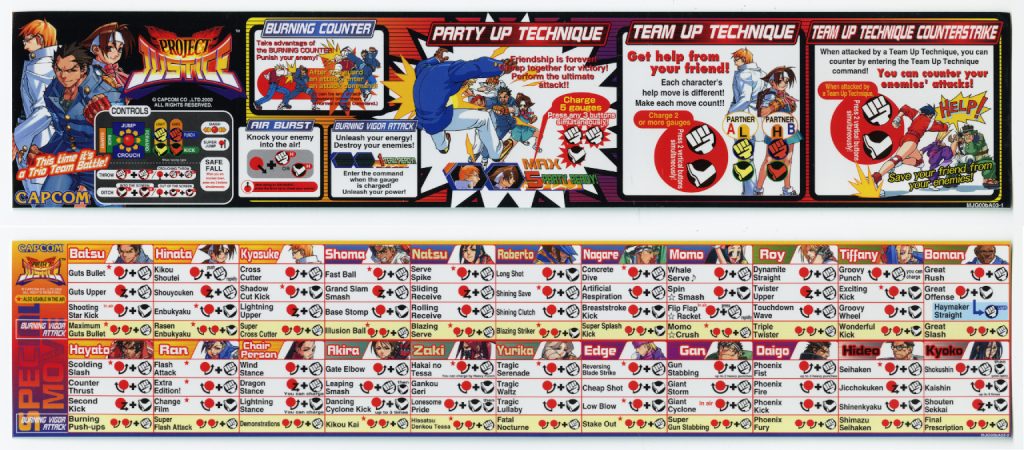Capcom has been bringing the heat with their recent releases in what could now be called the Fighting Collection series. Between introducing a bevy of new players to the Darkstalkers series in Capcom Fighting Collection to giving us a new release of the perennial fan favorite Marvel vs Capcom 2 in Marvel vs Capcom: Fighting Collection, fighting game fans of all stripes have been able to enjoy the classics on modern-day platforms. Next month, Capcom gives us the true sequel to Capcom Fighting Collection in the aptly-named Capcom Fighting Collection 2. This new entry to the collection not only brings back a number of well-loved titles, such as Street Fighter Alpha 3 Upper and the one-two punch of both Capcom vs SNK titles, but also reintroduces gamers to some classic titles like Plasma Sword: Nightmare of Bilstein, the dark horse hit Project Justice, and my personal favorite, Power Stone 2.
Capcom Fighting Collection 2
Developed By: Capcom
Platforms: Switch, PS4, Xbox One, PC
Release Date: May 16, 2025
We were given an opportunity to check out the game prior to launch, and as a fighting game fanatic myself, I can attest that, so far, it’s absolutely checking all the boxes it should be for a game like this. As much as I wanted to just sit down and play Power Stone 2 for hours and hours, I went through a number of these titles so I could give my thoughts on them individually. From the top, I’m happy to say I was largely pretty satisfied!
Project Justice
In the mid to late 90s, fighting games like Tekken and Virtua Fighter were experimenting with 3D polygonal graphics instead of the usual 2D sprites, as well as allowing the players access to the third dimension of movement as well, increasing the range of motion that the fighters had to more than just “towards” and “away”. Capcom was happy to get into the mix themselves, releasing a new Street Fighter spinoff in 1996 called Street Fighter EX that was co-produced and largely developed by spinoff developer Arika, who would go on to create the Switch-exclusive battle royale style games Tetris 99, Super Mario Bros. 35, and Pac-Man 99. While Arika was busy continuing the Street Fighter EX series (which are fun games that absolutely deserve the spotlight in any potential future Fighting Collection titles), Capcom put their efforts into a new 3D fighting game series, resulting in Rival Schools: United by Fate and the sequel featured here, Project Justice.

This game was an old favorite of mine back in the early 2000s, and coming back to it now, it was easy to recall why. The game plays similarly to Marvel vs Capcom but at a bit more deliberate pace, with teams of three characters each facing off in one-on-one bouts, with the ability to switch off characters between matches or to call them in for devastating team-up attacks mid-bout. One of the cooler additions to Project Justice is the ability to cancel out these team-up attacks by inputting your own team-up command. This sends in one of your teammates to intercept the attack, triggering what is essentially a fighting mini-game within the fighting game. Both your partner and the opponent’s partner square off in a micro-battle, where the first character to land a hit “wins” the mini-game. If the attacking player wins the duel, the team-up attack goes through as usual, but if the defending player was able to score the first touch, the attack is negated and the super meter wasted.
Project Justice plays great, even to this day. Though its not uncommon for older fighting games to feel their age, especially from this era considering the advances we’ve made in 3D graphics since then, Project Justice still feels like it can hang with modern-day fighters. While the graphics do feel a tiny bit dated at this point in time, the built-in CRT filter options that Capcom Fighting Collection 2 presents helps to alleviate this by giving you that classic perspective that helps smooth out the jagged edges. Not to mention there are eight different filter options (plus the option for no filter at all) so you can find the look that perfectly suits your style!
Capcom vs SNK: Millennium Fight 2000 Pro
I was a big fan of this game’s sequel, the also-included Capcom vs SNK 2: Mark of the Millennium 2001, but had never gotten around to trying this one out personally. After whetting my appetite on a fighting dish I knew I’d appreciate in Project Justice, I thought it best to give this one a whirl and see where one of my favorite fighting crossovers started. Capcom and SNK have now had a long history of intertwining their combative franchises together, extending even to their modern-day releases, with Street Fighter 6 featuring King of Fighters legends Terry Bogard and Mai Shiranui and the upcoming City of the Wolves promising Capcom classics Ken and Chun-Li in the first batch of downloadable fighters. Millennium Fight 2000 was more or less where it all started (if you discount Card Fighters Clash and the niche-handheld release Match of the Millennium, anyway), and once again, it’s safe to say that this classic still stands the test of time.

Any complaints that I have about this game are ones that no re-release was ever going to fix. Despite an impressively large roster of characters, or perhaps because of it, many of the characters were missing certain moves and combos that they had come to rely on in their respective series even when this game was released originally. The team-based gameplay is also built on an interesting, yet flawed, “Ratio System”. Each character is given a “ratio” that determines their power level from 1 to 4, allowing players to build a team of up to 4 points by mixing and matching power levels. This was a pretty cool concept in theory, but in execution it resulted in imbalanced (and imperfect) power differentials between characters, and perhaps more importantly, keeps players from assembling their perfect dream team of Capcom and SNK fighters. While you can change this to a standard 2 vs 2 teamup, it still limits your overall creativity, in my opinion.
All that being said, however, the gameplay itself is still fun and engaging, once you can get past those minor disappointments. The game is artistically impressive even now, however, perhaps even beating out its successor in the visuals department. The stages are vibrant and active, with most of them presenting unique introductions before the match even begins. All of the SNK fighters were redrawn in the Capcom house style, which really makes some of their colors and personalities pop. Some Capcom competitors were even given new sprites in this game as well, but others were ported directly in from their original games. Even those, however, fit into the grand scheme of the game pretty easily, and ultimately make Millennium Fight 2000 Pro stand up with Project Justice as one of the best looking games in the collection.
Plasma Sword: Nightmare of Bilstein
Street Fighter EX and Rival Schools weren’t Capcom’s only forays into 3D fighting, as they had put forth another, much lesser known sci-fi fighter called Star Gladiator a little before Rival Schools, even. A few years later, Star Gladiator received a sequel, sometimes called Star Gladiator 2 but known in the west primarily as Plasma Sword: Nightmare of Bilstein. This game series is most notable as the origin of the fan-favorite laser-sword swinging Hayato of Marvel vs Capcom 2 fame, but this sequel improved on the original in nearly every way and is worth checking out.

As far as 3D fighters go, it attempts to play with the third dimension a bit more than Project Justice, which largely adheres to the 2D plane while adding sidesteps to provide new ways to evade attacks. Plasma Sword has much more dynamic movement, allowing for massive sidesteps that bring you around to the opponent’s backside to punish committed combos. The game also features an extremely unique “Plasma Field” attack that, if it connects, locks your opponent with you in a smaller subsection of the arena for a short time, allowing you to pummel them with enhanced abilities. These enhancements vary by character, from allowing for infinite super moves to giving them giant swords or even allowing them to stop time. It’s pretty flashy and makes for an interesting change of pace from other games of its type.
Other than these things, however, Plasma Sword feels more like a relic of a bygone age than many of the other games in the collection. It’s certainly interesting, and probably worth a playthrough or two to see the goofy dialogue for each character’s storyline, but I doubt the gameplay is captivating enough to cultivate a dedicated online community in the way many of these other games are. The characters are just not interesting enough and the super moves outside of the Plasma Fields are mostly uninspiring to watch. Even so, I’m not mad to see it included, since not only is it far from unplayable, it’s undoubtedly part of Capcom’s fighting game history all the same.
Power Stone 2
I won’t say that I saved the best for last, because the truth is that Power Stone 2 isn’t going to be for everybody. But when the games that were being re-released in this collection were announced, there wasn’t a single one that I geeked out over quite like this classic party fighter.

Power Stone 2 is an evolution from its predecessor that adds two more fighters to the mix, making each battle a chaotic four-way brawl to the finish. Unlike the other fighting games in this collection, Power Stone 2 gives you a more top-down view of the battle field, and the characters roam about the entirety of it, assailing each other with punches, kicks, and whatever weapons can be found laying around or revealed from treasure chests that occasionally pop into existence. The greatest strength, however, comes from the titular Power Stones. Obtaining three of these stones transforms your character into a more powerful version of themselves, enhancing all of their standard attacks and also unlocking two mega-power “Fusion Moves” that often can and will damage multiple opponents at once. It’s fast, frantic, and still incredibly fun, and perhaps of all the games included in the collection, it’s the one I am most excited to get together with my buddies and go crazy on.
This is, though, perhaps the best place to lodge my main criticism of Capcom Fighting Collection 2 in general: this game, like all of the other games in this series, is explicitly a re-release of the arcade version. This comes as no surprise, being consistent to both games in the Fighting Collection series before it, but it was here that I found the decision most noticeable. The Dreamcast port of Power Stone 2 was replete with so many additional and entertaining features that coming to this game and seeing nothing but the basic arcade mode was a bit of a letdown. Ultimately, I can understand the decision: the Fighting Collection series, with its focus on online play, is primarily intended for the hardcore fighting game fans who are looking to pit their skills against other battle-tested opponents, and aren’t as interested in the bells and whistles of additional modes and features. That said, Power Stone 2 is about as far from a sweaty competitive game as you can get, which makes the absence of the Adventure Mode and the Item Shop all the more conspicuous.
Overall Observations
Apart from my specific thoughts on the games individually, the general presentation and quality of life features that were added to Capcom Fighting Collection 2 are quite significant and worth the mention. Not only are the display filters noted during my Project Justice write-up are available in every game, you are also able to select from a number of screen borders that line the left and right sides of the screen in order to preserve the games’ original aspect ratios. These borders are usually character art, but there’s often at least one that is a more stylistic design. What’s more, the game saves your border and filter choices per game once made, allowing you to experiment with different styles for different games and not have to remember which ones you most enjoyed every time you launch a title.
Though the display options are nice, there’s still far more new features to talk about. Chief among them is the inclusion of one-button special moves being added to all of the games, which is a great equalizer for less-experienced fighting game fans to butt heads with the long-time aficionados. This is a feature that is often hotly contested by some in the fanbase, so Capcom wisely made this feature optional for online bouts. For those who want to learn the specials, you’re also being taken care of: every game, regardless of whether it had one originally or not, has been given a move list. Players can pause during their single-player bouts to find the list of available moves for their current character, and can also scroll through the other characters as well in case they want to know what’s coming from the opponent. This is a feature that’s pretty standard in fighting games these days, but certainly wasn’t available at the arcade machines!

Old school fighting game fans might remember, instead, that what we did have available to us for learning fighters was usually in the form of a graphic marquee card, set between the buttons and the screen, that showed every available character and at least a couple of their special moves. Capcom Fighting Collection 2 carries on this tradition as it did in Marvel vs Capcom Fighting Collection by adding these marquee cards to the pause menu. Though perhaps more for nostalgia’s sake than anything, since the move lists are always more comprehensive, it’s great to see these colorful and unique aspects of arcade gameplay brought back into the modern era all the same.
Lastly, the inclusion of training modes to all these games may be a feature that’s been consistent in all of the Fighting Collection releases thus far, but its robustness is still worth emphasizing. While every game includes a training mode that will show the button inputs you’re doing and offers numerous settings for both your training “dummy” and yourself, the 2D fighters are also treated with hit- and hurtbox overlays, a fantastic feature that allows players to really fine-tune their style and understanding of those games’ mechanics.
Final Thoughts
While Capcom may have received some initial criticism in the original Capcom Fighting Collection for its over-reliance on Darkstalkers games, the Marvel vs Capcom Fighting Collection was largely applauded, and this game looks to be continuing along that trend. The selection of games available in Capcom Fighting Collection 2 is really one of the most impressive I think they’ve amassed thus far. The original game was perhaps a bit too heavy on Darkstalkers and more niche/lesser-known titles, and the Marvel-based collection was a pretty specific slice of Capcom’s fighting history that may not appeal to everyone. Fighting Collection 2, meanwhile, feels like it has really nailed the balance of casual to hardcore games as well as niche to popular games, ensuring that, so long as you’re a fighting game fan, there’s almost certainly something in here for you.
On top of that, the quality of life additions that are now a staple of the Collection series do wonders to breathe new life into these titles, hopefully bringing forth a resurgence in popularity for many of them. There’s a lot to love about this collection, and I can’t wait to dive more fully into the online modes once the game’s truly launched!
Capcom Fighting Collection 2 is scheduled to release May 16, 2025 for the Nintendo Switch, Playstation 4, Xbox One, and Steam platforms.

